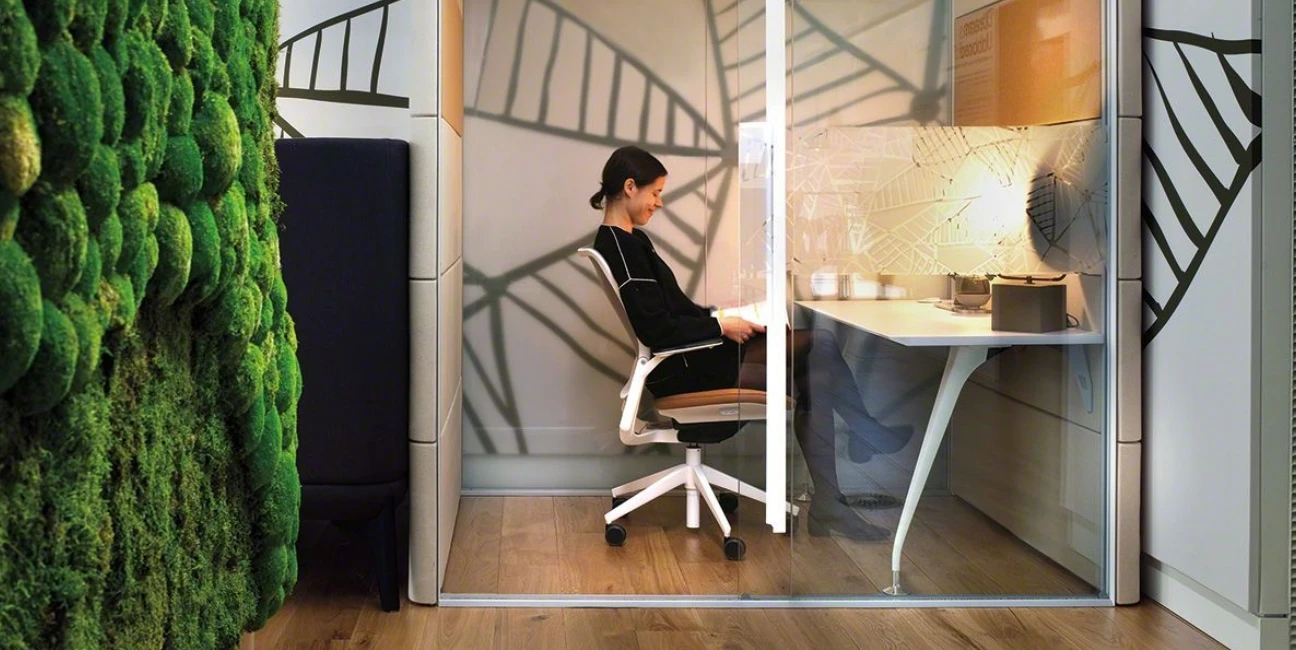

In today’s ever-evolving work landscape, organisations must remain agile to accommodate the shifting needs and trends of their employees within office spaces.
As companies work to entice employees back into the office, they are embracing flexible and collaborative workspaces, often at the expense of private or focus areas. Consequently, this creates increasing requests from employees returning to the office for ‘private office spaces’ or ‘quiet rooms’ in the current hot desking environment.
A unique opportunity arises to reimagine traditional private offices as a new approach to shared private spaces. But how do employees currently use and perceive these spaces?
The rise of a ‘new’ office space trend
Following recent policy changes on hybrid working, we are seeing global organisations begin to mandate return to work more frequently. This is borne out in the recent global increase in average occupancy levels witnessed recently.
Data from Freespace analytics unveils substantial shifts in work patterns, indicating a significant increase in employees opting for 2-3 days per week in the office, and sometimes even 4 or 5 days per week in specific regions. Globally, occupancy rates have trended upwards by 3% since July 2023.
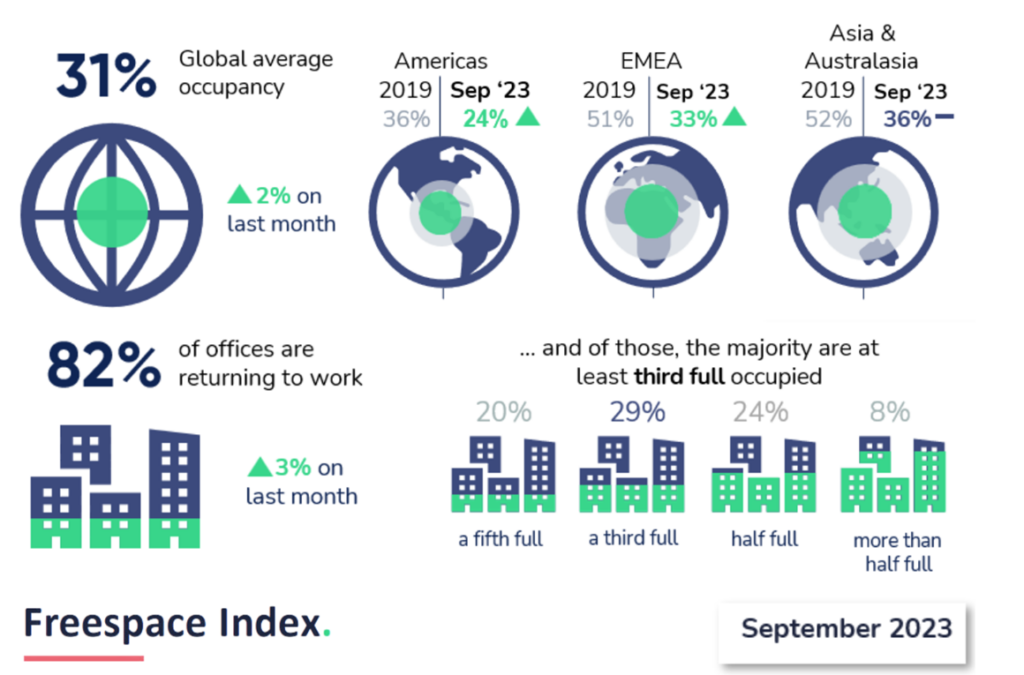
So, what drives employees back to the office and fuels the demand for shared private office space?
Aside from policy changes, factors like transportation reliability and living conditions impact office attendance. Additionally, a recent Harvard study revealed that some employees are more productive in the office due to its work-focused environment, aligning with senior executives’ need for control.
Surprisingly, despite companies’ shift towards collaborative open spaces, employee engagement hasn’t improved, with a 70% drop in face–to–face interactions. Offering a shared private office space may stimulate more employee interaction by enabling employees to get quiet or sensitive work done for part of the day in the office on the same days that they come in to collaborate with colleagues. Working in silence promotes creativity, ideas often emerge in collaborative settings. However, many employees also require private, quiet time to process and tackle logistical tasks. Silent processing is essential for fostering engagement.
Identifying use: private offices
The concept of a shared private office represents a specialised workspace that merges the advantages of shared, collaborative environments with private, secluded areas. It’s designed to provide individuals or small teams with a space for private or semi-private work while remaining within a larger shared office or coworking environment. This is ideal for professionals who require privacy for focused work, meetings, or confidential discussions while still enjoying the community and amenities of a shared office.
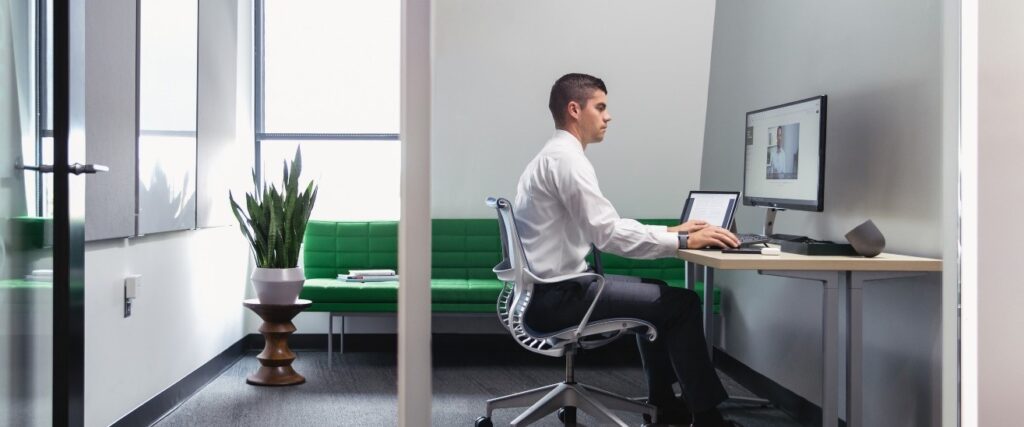
From our clients’ perspective, we’ve observed a rise in the number of global organisations repurposing underutilised real estate, such as empty meeting rooms, as reservable private offices.
These clients are utilising our reservation system to make these repurposed spaces accessible and to enforce priority use policies. These policies require bookings to be made a week in advance and primarily cater to employees of specified seniority who work from the office at least twice a week. However, any unreserved rooms become available for all other employees to book 24 hours prior to the day. This arrangement not only optimises space utilisation but also extends the benefits to a wider employee base, demonstrating a commitment to flexibility and inclusivity across all staff levels.
Another example where shared private offices have proven successful is for third-party providers, such as Regus, Gabble and Hubble. These companies profit by renting private office spaces to businesses and individuals. Their thriving model revolves around a managed approach that offers practical and easily accessible options for securing workspaces; private offices included.
Shared yet private: navigating this new approach
The increasing demand for individual focus workspaces is evident. Data from our analytics dashboard reveals a 4% average rise in workstation occupancy and a 2% increase in the use of focus spaces globally since July 2023, underscoring the shift in employee preference towards a shared yet private office space approach.

However, there are unique complexities that make management of shared private office spaces different to meeting rooms, desks or phone booths.
- Meeting rooms are purposefully designed spaces that foster collaboration and teamwork, allowing employees to engage and interact, regardless of their physical location. The policies governing their usage are carefully crafted to accommodate both impromptu and scheduled meetings, while also promoting a synergistic environment for both remote and onsite personnel. Conversely, the utilisation of shared private offices entails more intricate considerations. These spaces are typically allocated based on hierarchical structures, primarily for onsite employees. However, the assignment of these offices also takes into account factors such as the nature of work, confidentiality requirements, employee schedules, and the need for uninterrupted focus.
- Phone Booths or Office Pods are secluded and noise-canceling, intended for brief use and as a result, not optimised for lengthy periods of comfort or efficiency. Unlike shared private offices, they are compact, designed to provide privacy but lack many amenities integral to productivity and well-being. They often fall short of offering technological resources such as power outlets, display screens, or a booking system. Furthermore, lighting or ventilation, which are standard in shared private offices, may also be inadequate in these confined spaces.
- Desks are mostly allocated to individual employees and as such, they serve more of a personal space than a collaborative one. Desk sharing presents a different challenge, with the potential for conflict arising from differences in work styles, storage preferences and cleanliness habits. As such, desk allocation policies actively address these issues while also providing employees with the flexibility and autonomy needed to feel comfortable.
Combining technology to overcome complexity
To successfully implement this new concept of shared private offices, ensuring access to the right technology is vital. This is because technology is what will enable organisations to address the complexities previously identified, in the design phase, and bring the concept to life. Current workplace technology in the market may not provide a full picture of how to design, monitor and manage these types of spaces. Organisations must have a deep understanding of the opportunities these spaces create and establish a way to manage accessibility and maximise availability for an enhanced overall experience. So, how can they achieve this?
Identifying opportunities for private office spaces
For organisations that have limited or no shared private office space, they need to understand how employees use the existing space available. The most accurate way of achieving this is through the deployment of workplace sensors. They will help identify:
- Meeting room misuse (i.e., 1 person using a 4-person room all day, or booked rooms not being used at all).
- Phone booth misuse (i.e., obtaining insights on phone booth dwell time and maximum use time) indicating employees need private spaces suitable for longer term work.
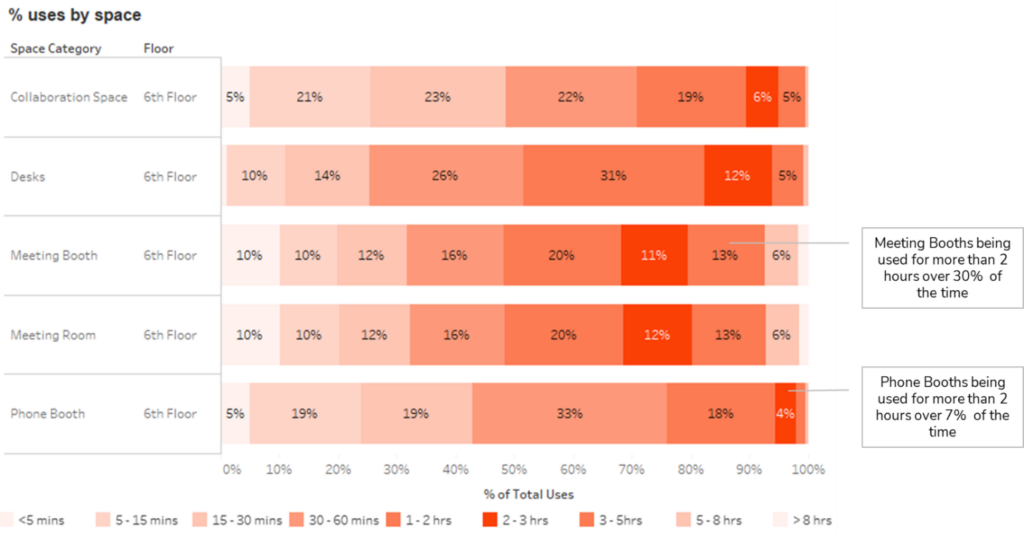
Sensors enable behavioural patterns to be established and provide the necessary data to inform space redesign and introduce shared private offices.
Private office space booking
Organisations need a tool that enables them to configure the workspace for effective reservation of private office spaces. the following aspects should be considered when selecting the right tool:
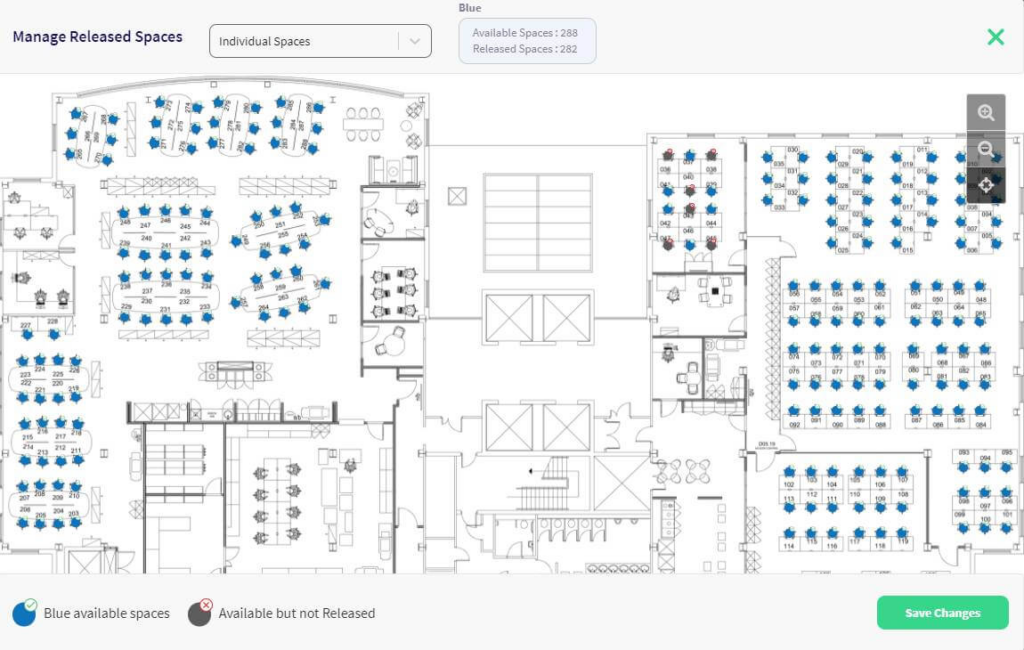
- Ability to set the space rules in the system (i.e., marking spaces as private office space, identifying which users or departments can book the spaces, times of the day available for booking, booking cut-off times etc).
- Users who are permitted to book these spaces can view and access these via an app with the ability to book in advance, giving them the reassurance, they will be able to undertake focused work when at the office.
Enhanced experience and maximising availability
It’s evident through the misuse of meeting rooms and phone booths that there is a demand for shared private office spaces in the workplace. Therefore, to improve the overall experience and ensure organisations maximise their availability the following needs consideration:
- Experience: Reservation and occupancy status can be displayed on digital signage both outside the office and on floor signage. As these aren’t a nominated space that an employee regularly uses, it enables them to use wayfinding features to locate their booked space. Additionally, employees can identify available spaces and book these if they have the required permissions set by the organisation.

- Automation: Any space reservation tool should have a check-in and no-show functionality ensuring that any unused spaces can be fed back into the pool on the day. Additionally, the use of occupancy sensors can also drive no shows as well as provide data on utilisation, trends etc. of these new space types.
An integrated solution for Hybrid working
Incorporating this combination of technology will unlock a variety of long-term benefits. Including:
- Increased occupancy
- Elevated productivity levels
- Enhanced employee morale
- Reduced costs associated with underutilised real estate
- Greater efficiency
- Improved workplace design
Repurposing workspaces with Freespace
Freespace is transforming workspaces by identifying underutilised areas, simplifying policy enforcement, and facilitating their repurposing to maximise impact.
Our integrated technology, including an intuitive Employee App and customisable Digital Signage, streamlines operations and enhances productivity, creating exceptional employee experiences. Reshape your workspace today – request a demo.


